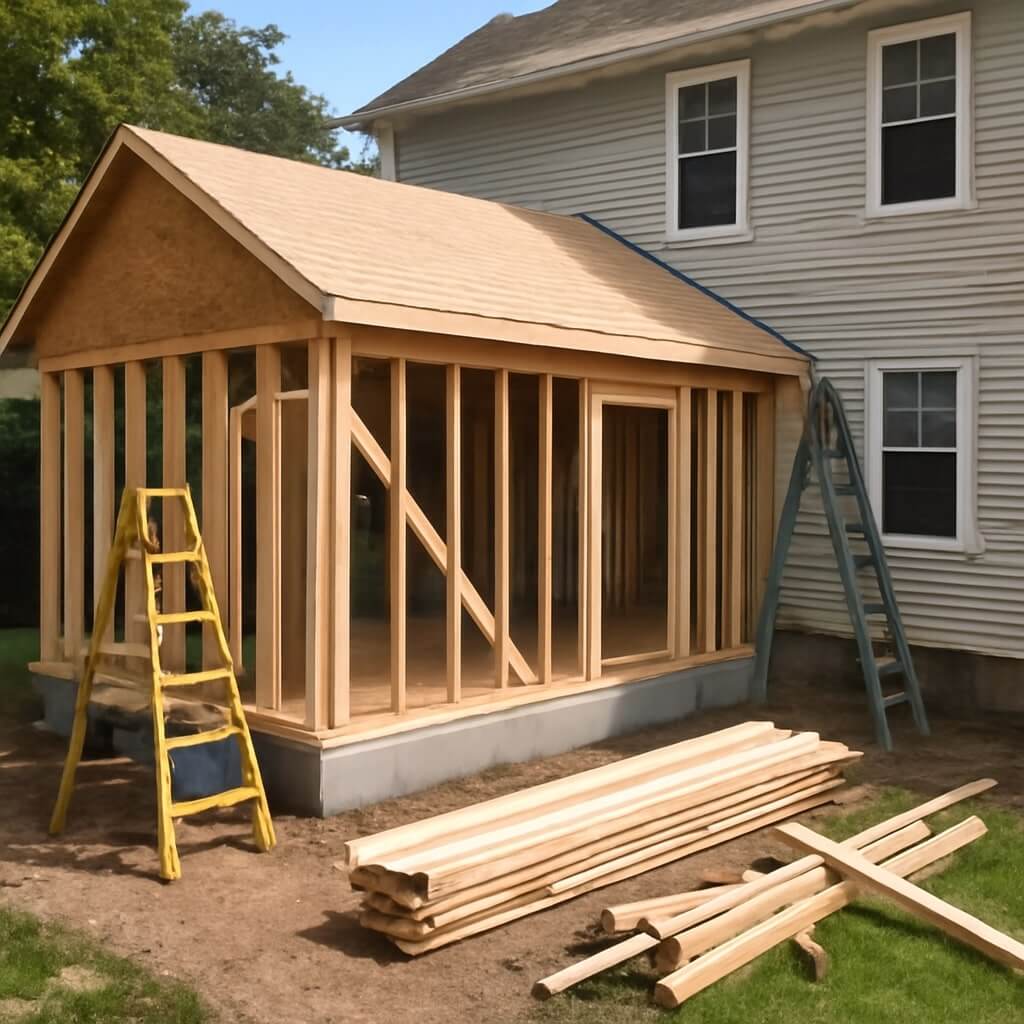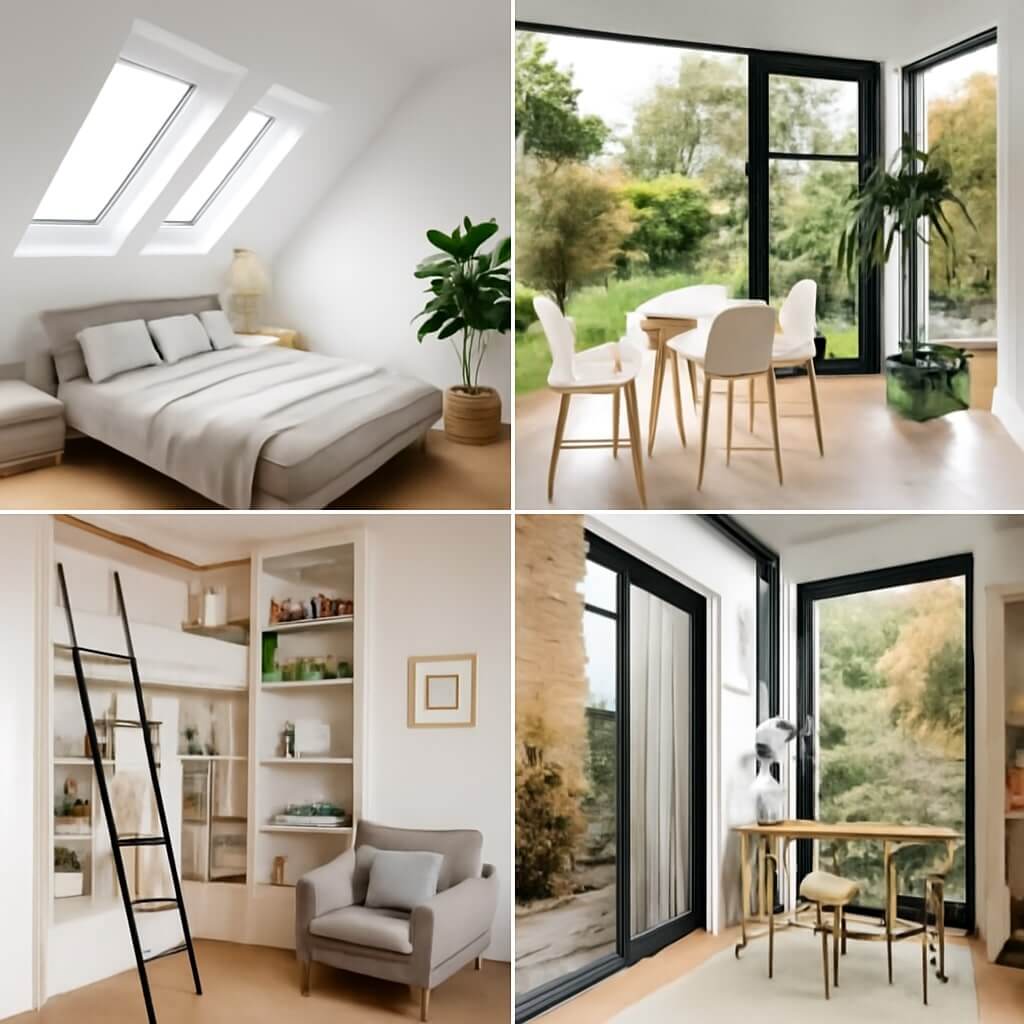When you’re considering home additions, it’s vital to have a clear plan in place. Start by defining your specific goals and needs to guarantee the new space complements your lifestyle. Next, setting a realistic budget will help you avoid unexpected costs. But that’s just the beginning. There are several more important steps to take that can make or break your project. Let’s explore these essential steps together.
Key Takeaways
- Define your goals by evaluating space needs and prioritizing functionality for your home addition.
- Set a realistic budget by consulting contractors and allocating funds for unexpected costs.
- Research local regulations and permits to ensure compliance with zoning laws and safety standards.
- Design your space with intended use, natural light, and multi-functional furniture in mind.
- Hire licensed professionals, verify their references, and maintain regular communication throughout the project.
Define Your Goals and Needs
Before diving into a home addition project, it’s essential to define your goals and needs clearly.
Start by evaluating your space requirements. Think about how your current layout fits your lifestyle changes—perhaps your family’s growing, or you’re working from home.
Identify specific areas you want to enhance, whether it’s adding a bedroom, expanding the kitchen, or creating a dedicated office space.
Prioritize your needs by considering functionality and future use. Document your ideas and visualize how each addition aligns with your daily life.
Establishing clear goals will guide your decisions and guarantee your project meets your expectations.
Set a Realistic Budget
While planning your home addition, setting a realistic budget is essential to guarantee the project remains feasible and aligns with your financial situation.
Setting a realistic budget is crucial for ensuring your home addition project stays feasible and aligns with your finances.
Here are some budgeting tips and cost-saving strategies to evaluate:
- Get Estimates: Consult multiple contractors to gather accurate quotes and determine average costs.
- Prioritize Needs: Focus on essential features first, postponing less critical elements for later.
- Allocate a Contingency Fund: Set aside 10-15% of your budget for unexpected expenses.
- DIY Where Possible: Think about handling simple tasks yourself to save on labor costs.
Research Local Regulations and Permits
Once you’ve set your budget, the next step involves understanding the local regulations and permits required for your home addition.
Start by researching zoning laws in your area to guarantee your plans align with local guidelines. These laws dictate what can be built and where, affecting your design options.
Next, review the permit requirements for your project; most additions need permits to comply with safety standards.
Contact your local building department for specifics and any necessary documentation. This research will save you time and avoid costly mistakes down the road, guaranteeing your home addition goes smoothly.
Design Your Space
When you start designing your space, it’s essential to keep both your needs and the overall flow of your home in mind.
Focus on space functionality while also considering aesthetic elements that enhance your overall design. Here are four tips to guide you:
- Assess Your Needs: Determine how you’ll use the new space.
- Maximize Natural Light: Plan for windows or skylights to create an inviting atmosphere.
- Choose Complementary Colors: Select hues that harmonize with your existing décor.
- Incorporate Multi-Functional Furniture: Opt for pieces that serve multiple purposes to optimize space utility.
Hire the Right Professionals
Hiring the right professionals can make or break your home addition project, so it’s crucial to do your homework.
Start with contractor selection; look for licensed, insured contractors with experience in home additions. Check their references and past work to guarantee quality.
Choose licensed and insured contractors with home addition experience and verify their references for quality assurance.
Don’t forget to discuss project management—make sure your chosen contractor has a solid plan to oversee timelines and budgets.
Clear communication is essential, so establish regular check-ins to stay updated.
Conclusion
By following these five essential steps, you can effectively plan your home addition and create a space that truly reflects your needs. Start by clearly defining your goals, then set a realistic budget to guide your decisions. Make sure to research local regulations and design your space thoughtfully. Finally, hiring the right professionals will help bring your vision to life. With careful planning and execution, your home addition can enhance your living experience for years to come.




